Other applicable names for this itinerary would include: A Wine (and Cider) Fueled French Excursion, No Fast Food Allowed French Road Trip, and Natural Wonders and Rich History Across France. That’s just how much there is to experience on this all-encompassing road trip across France – there is something for everybody! If you’ve already toured France’s largest, most popular city and spent your holiday relaxing on its Mediterranean coast, it’s time for a deeper exploration of this vast and diverse country by way of the road. You’ve come to the right place for road trip inspiration!
This itinerary takes you from the Northern Coast in Normandy down through the Loire Valley to the Bordeaux and Burgundy wine regions, and back up through Champagne with some stops along the way. Significant historical sites, incredible scenery, delicious cuisine, and endless wine await.
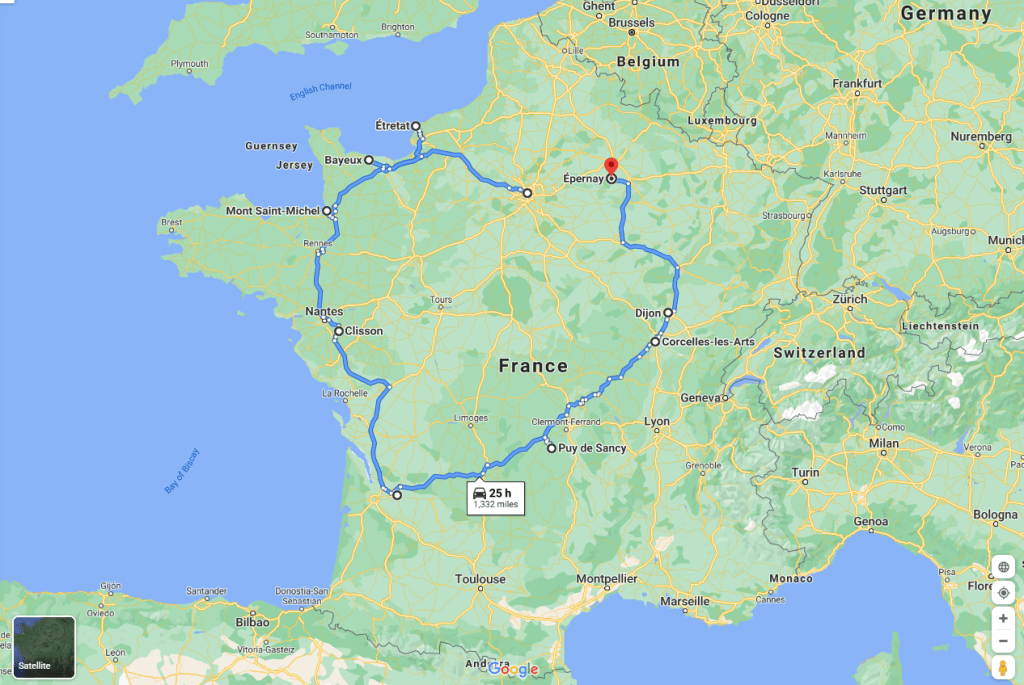
KNOW:
- France has an extensive and decentralized history, having known to have been inhabited since at least 400,000 BC. Greeks, Romans, Carthaginians, and Vikings were among the more widely recognized inhabitants of Gaul long before the French Revolution and Napoleon’s subsequent reign over the French Empire. France was a participant in both 19th century colonialism and the World Wars of the 20th centuries, but long before these it suffered through a War of Religion within the French Kingdom. As an important cultural center, its language, art, food, and wine are celebrated around the world. There is a lot to know when it comes to France, but by learning more about the history of areas of the country that you are visiting, you’ll have a broader appreciation for the culture.
- The Great Courses offers The Great Tours: France through the Ages, a series of 24 lectures by Professor John Greene, PhD that covers French history and culture across its 13 regions.
- To drill down into the French Revolution: The Great Courses also has a fantastic audiobook called Living the French Revolution and the Age of Napoleon by Professor Suzanne M. Desan (a UW-Madison professor), which covers the 25 years between the onset of the French Revolution in 1789 and the Bourbon Restoration after Napoleon in 1814.
- For more context on the WWII battles in Normandy, The Longest Day and Saving Private Ryan are two recommended movies, as are episodes 2 and 3 of the HBO series Band of Brothers.
- Learning even just a few French phrases will significantly enhance your experience since English isn’t as widely spoken outside France’s largest cities. The general recommendation is to greet someone with a pleasantry like Bonjour or Bonsoir and then ask them if they speak English (see below). Starting a conversation with French is appreciated and more often than not the other party won’t mind proceeding in English.
- To say hello, use Bonjour.
- If you want to greet someone in the evening use Bonsoir.
- Thanks can be expressed with Merci.
- If you want to ask someone if they speak English, say Parlez vous anglais?
- If you need to excuse yourself for a simple mistake or move past someone in a crowd, use Pardon, but in preparation for asking a question, you can say Excusez-moi.
- If you’re looking for the toilet, Les toilettes? will get you pointed in the right direction.
- To toast with your drink, use A santé!
- For visits to vineyards, keep in mind the high-level schedule below:
- Low season is from November to March – many vineyards don’t offer or have limited tours
- First week of April is Primeur Week – vineyards are only open to professionals
- Spring – great time to visit as there aren’t as many crowds
- Summer – busiest time so best to book well in advance
- Fall Harvest in September and October – vineyards are open but it’s a good idea to reserve a tour in advance


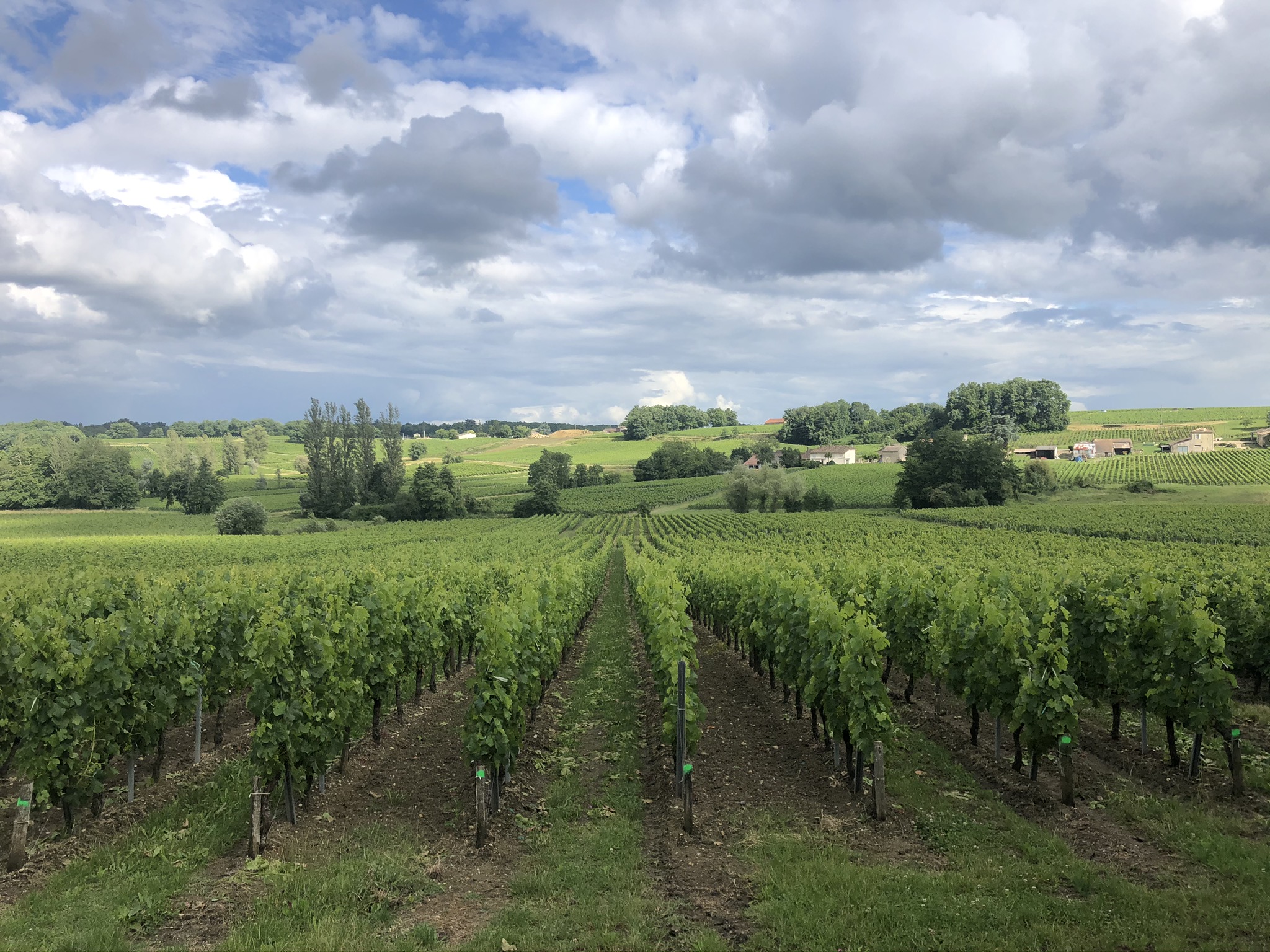

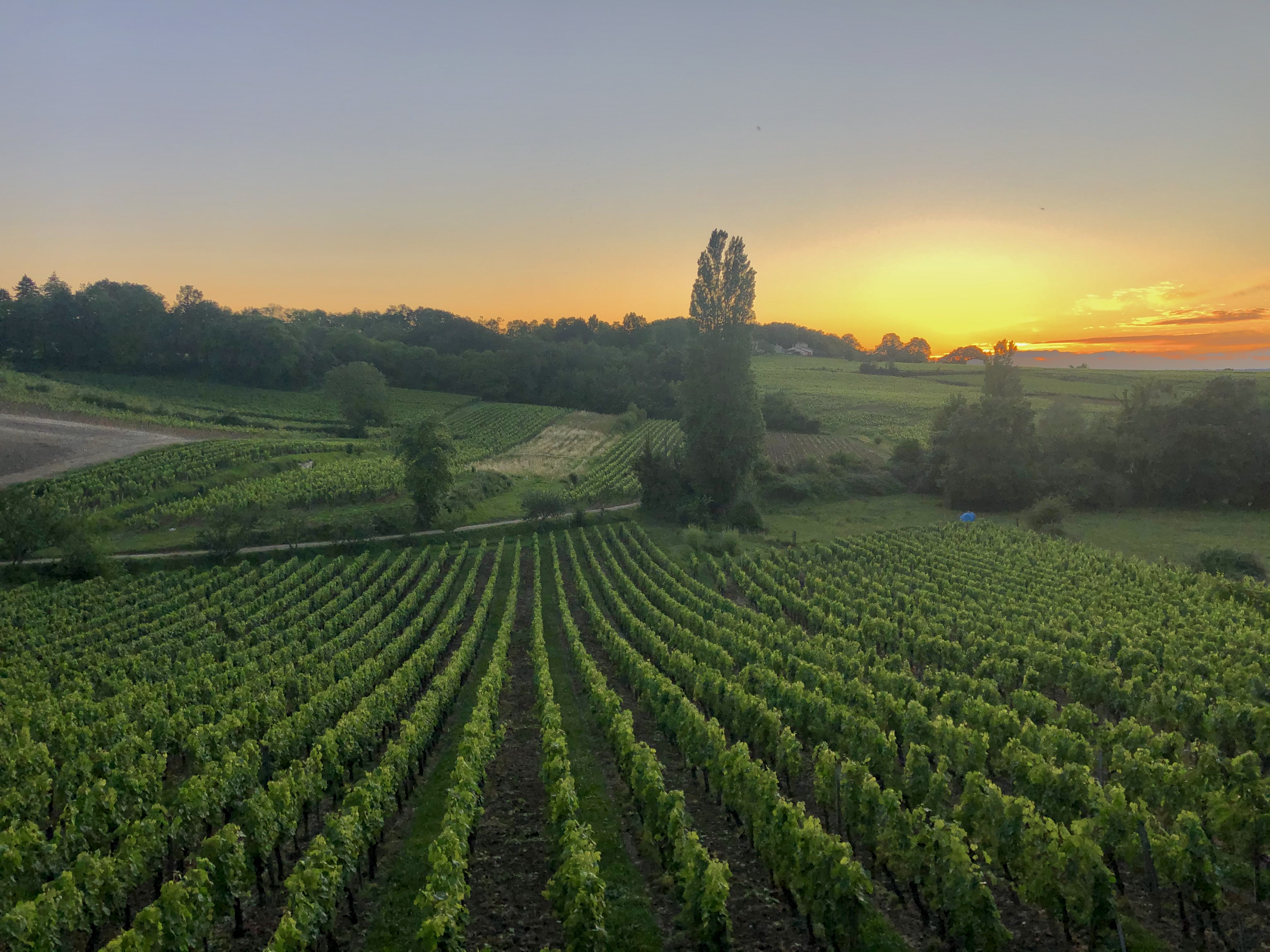
PREPARE:
- Consider what you are looking to get out of your visit and plan ahead where possible. Do you want to unwind with wine, trek on trails, check out châteaux, hear about history, or relax on a river boat? Each of France’s regions has something unique to experience but I’d recommend managing your expectations about what you can feasibly accomplish on a road trip by identifying your primary points of interest, determining your route and overnight destinations, and finally picking out places to stop in between. A few other tips for ensuring you make the most of your time are:
- If possible, avoid commuting in August on account of the significant traffic that results from the summer holiday season.
- Book guides (in Normandy) and tours with transportation (to/from vineyards) in advance.
- Dinner reservations are always a great idea but not always necessary.
- If you’re planning to rent an Airbnb or stay at a B&B, check if the host has bikes that can be borrowed for getting around, which is especially helpful when visiting vineyards.
- Autoroutes, or expressways, connect the largest of cities and regions across France and are the most efficient way to travel across this expansive country. Denoted by the letter “A” (such as A83), they are owned and maintained by operators that charge tolls to commuters based on distance travelled or at a fixed fee. Typically, you take a ticket from a tollway when you enter an expressway and then pay toll when you exit or when the toll section ends. The most convenient method of payment is the télépéage electronic transponder, denoted by an orange “T” at the tollbooth, but many tolls now accept credit and debit cards for payment. Nonetheless I would strongly advise having Euros (bills and coins) on hand. Tolls range in price from a couple Euros to 20 Euros (yes, it gets expensive).
To avoid tolls and experience the scenic, rural countryside, take the national roads, but do note that your commute will take much longer and you’ll be missing out on the very clean and welcoming rest stops with FREE restrooms along the autoroute.

SEE:
For this itinerary, I start on the northern coast and move counterclockwise, heading south and then finishing in the northeast. Paris is a great starting or ending point for this trip and if you’re in need of ideas, I also have a guide for that!
- The small Normandy seaside town of Étretat is known for its dramatic chalk cliffs and rock formations that jut into the water. Go for a swim in warmer weather or take in the view of the cliffs from the pebble beach. For some exercise and expansive seaside vistas, head up to the clifftop trails that are accessible from the north and south ends of the beach. Parking in town can be challenging on account of the number of tourists who frequent this charming city, but there are surface lots just outside city center on D39 that charge a small fee and even have a public toilet. There are also numerous restaurants and cafes in town making this an excellent stopping point on a drive through Normandy.
- On a visit to Bayeux you shouldn’t miss the UNESCO-listed, 230 foot-long Bayeux Tapestry that depicts the 1066 Norman conquest of England nor the towering 11th century Cathedral of Our Lady of Bayeux. With plenty of hotels and places to eat, the city also makes for an excellent home base while touring the beaches of D-Day, either on your own (by vehicle) or with a guide. Note that if you are visiting around June 6th, there is an annual D-Day Festival with events worth attending that are held in various cities across the region.
A couple of recommended guides for touring WWII beaches and other notable sites in the Normandy area, like Mont Saint-Michel, are Normandy Sightseeing Tours (half day tours available) and Experience Normandy Tours. Both guide services can provide transportation and will pick up their clients in Bayeaux.

Bayeux Cathedral which has stood since 1077 
Signs in Bayeux honoring the 75th Anniversary 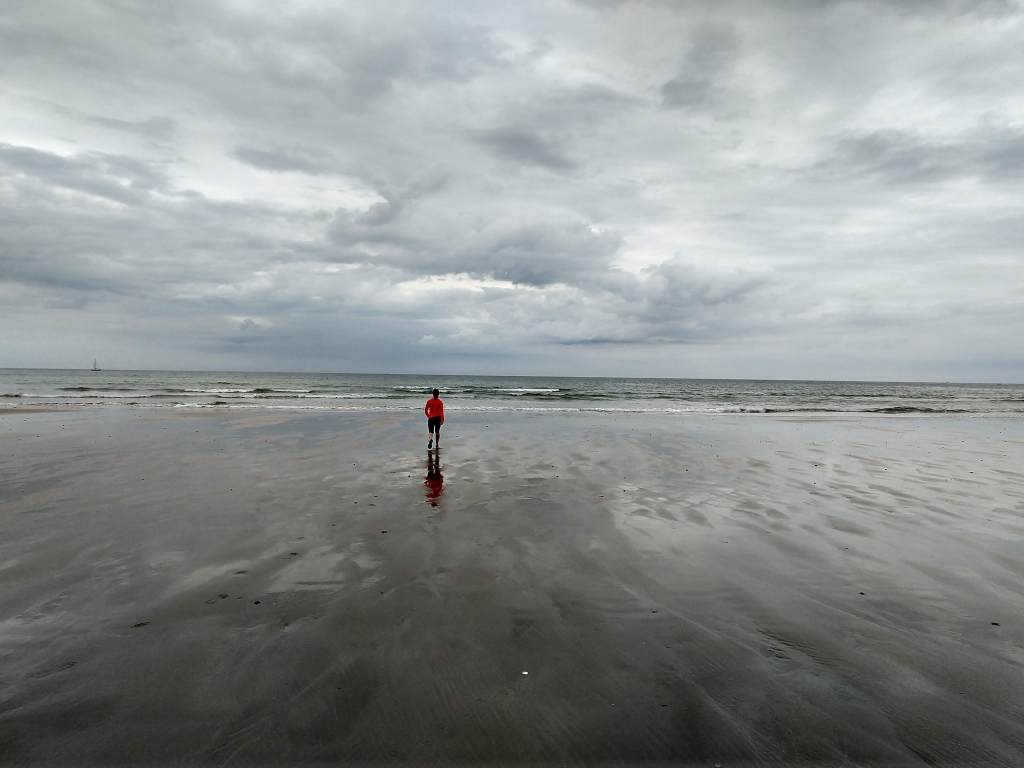
Appreciating the view from the beach 
75th D-Day Anniversary in Sainte-Mère-Église, Normandy
- Mont Saint-Michel is a tidal island home to a gorgeous abbey located in an estuary about one kilometer off the shoreline. A bridge now connects this UNESCO World Heritage Site to the mainland, allowing for exceptional viewing from a distance and easy access to the island during both low and high tide. Mont Saint-Michel has been both a center of pilgrimage and a prison but remained unconquerable by England during the One Hundred Years War. The medieval abbey atop the island, visible from miles away, was constructed in the 11th century.
There are a couple things to keep in mind when planning a visit to Mont Saint-Michel. A large parking lot is located on the mainland with a free shuttle bus offered to cover the distance between the lot and island. If you can, visit later in the day and take advantage of the reduced parking fare after 7 PM during both low and high seasons (parking fee dependent upon season). It is also possible to walk the two miles from the parking lot to the island via the Barrage sur le Couesnon or better yet, rent a bike on the mainland and pedal over.
Once on the island, note that there are many stairs and cobblestones to navigate, especially if you desire a view from the ramparts. Visiting in the evening and/or during less than ideal weather may be the best time if you can tolerate rain and wish to avoid crowds.
There are restaurants, bars, and hotels on the island but if you don’t want to pay a premium, I recommend the town of Pontorson as a convenient home base. For dining in Pontorson, don’t miss the galettes at Crêperie du Couesnon for lunch or dinner and the Wednesday market for a breakfast galette.




- Heading directly south through the Pays de la Loire region and less than 20 miles past Nantes, you will find the picturesque, Tuscan-village inspired commune of Clisson. The area is known to have been occupied since the 11th century with much of the still-standing Château de Clisson having been built in the 13th century. After the commune was burned down during the counter-revolutionary uprising of the French Revolution, it was rebuilt in the early 19th century with an abundance of inspiration from central Italy. Visit the château or partake in a stroll around its ramparts. There are also signposts marking walking trails of varying lengths in the area. La Brasserie de Papa allows you to dine from the deck with a view.
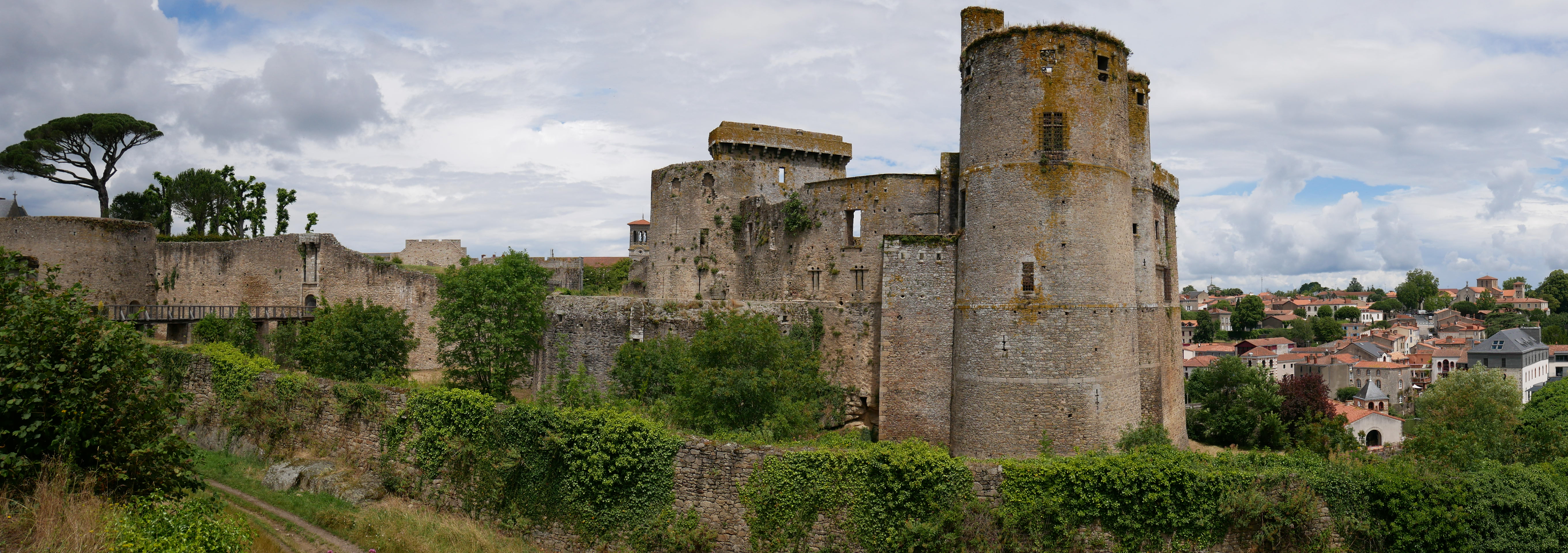
- If an abundance of French wine is what you seek, you can’t go wrong by heading to the Bordeaux wine region where you’ll have your pick of wines from the Left Bank (Médoc and Graves) or Right Bank (Libournais, Bourg, and Blaye). There are over 50 Bordeaux wines with the French Appellation d’origine contrôlée (“AOC”) designation which is granted to and protects certain French geographical areas for wines, cheeses, butters, and other agricultural products. Whether or not the AOC certification is of importance to you, I’d recommend a visit to or stay in Saint-Émilion and its neighboring commune Montagne.
Two vineyards with friendly and unpretentious tours I can recommend are Chateau Maillet in Pomerol and Château Champion in Saint-Émilion. It is recommended to make all tour and tasting reservations in advance by contacting the vineyard directly (email or phone) or arranging for a tour through the Saint-Émilion tourist office, which often includes transportation.
Saint-Émilion is UNESCO World Heritage designated site with both ruins and surrounding scenery to explore between tastings. Vineyard cultivation and wine making have been connected to the region since the Romans occupied what was then Gaul. The Saint-Émilion area later gained prominence as a result of its position on a pilgrimage route to Santiago de Compostela in Northern Spain. Worth a guided visit is its Monolithic Church that was constructed in the early twelfth century and is partly subterranean, having been dug into a rocky hillside. After navigating the narrow cobblestone streets, stop in at Sous la robe wine bar for a friendly recommendation followed by dinner at Le Tertre. In Montagne, both La Reserve du Presbytere and La Clos Mirande are spectacular places to dine, the later of which has an amazing vineyard view off the back patio.
The tourism office proposes a few walking routes in the area, but I would highly recommend this 11 km hike that starts and ends in Saint-Émilion but includes scenic vineyard overlooks and a visit to the peculiar Les Grottes de Ferrand.
Side Note: If you’re heading into the city of Bordeaux, consider a visit to the coast and Europe’s tallest sand dune. Dune of Pilat is a one-hour drive from Bordeaux or one hour 45-minute drive from Montagne and Saint-Émilion.
- Traveling northeast, vineyards give way to forested hills as you reach the Massif Central highland region in the middle of Southern France. Consider taking a break at or staying overnight near Puy de Sancy, the highest of the mountains and plateaus in the region. With an elevation of almost 6,200 feet, Puy de Sancy is part an ancient stratovolcano which has been inactive for approximately 220,000 years.
To take in the spectacular view, you can ride the telepherique (cable car) up and/or back down or ascend and/or descend the mountain on foot. The cable car will deposit you close to the top with a 20-minute ascent across a wooden boardwalk with 860 steps to reach the summit. Hiking down from the summit by way of the trail will take 1.5 – 2 hours but for a full day excursion you can connect to other neighboring summits using the marked trails. Note the cable car opening times (closed for a lunch break) and ticket prices based on whether you are riding round trip or one-way.
The town of Le Mont-Dore sits at the base of Puy de Sancy and has restaurants, hotels, everything you need for a break or overnight visit, including in winter if you’re in town for skiing.
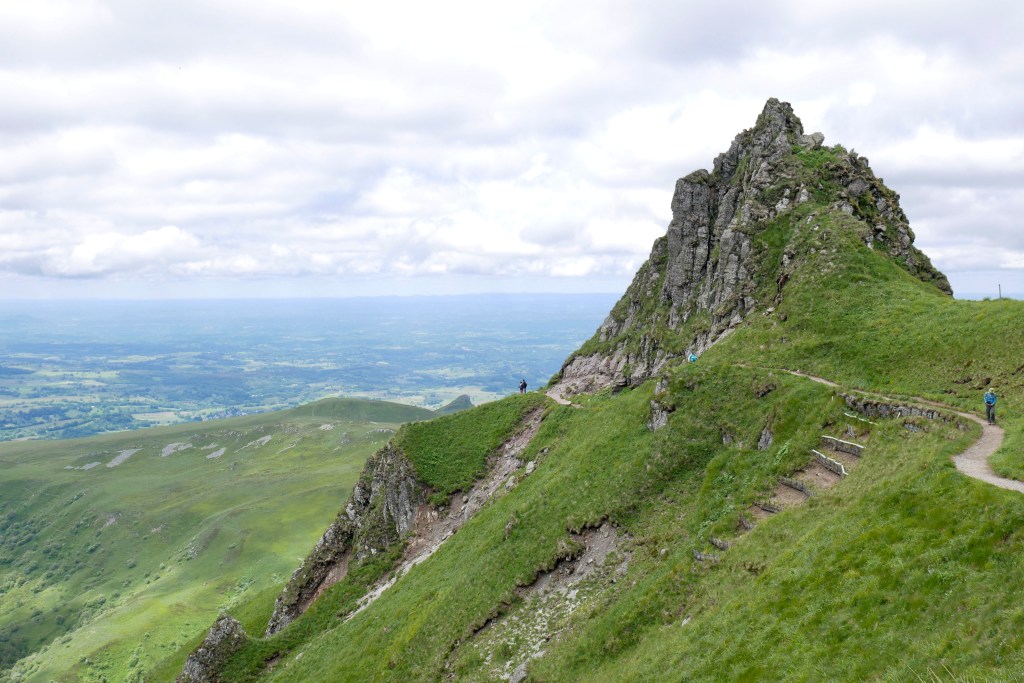
Trails on Puy de Sancy 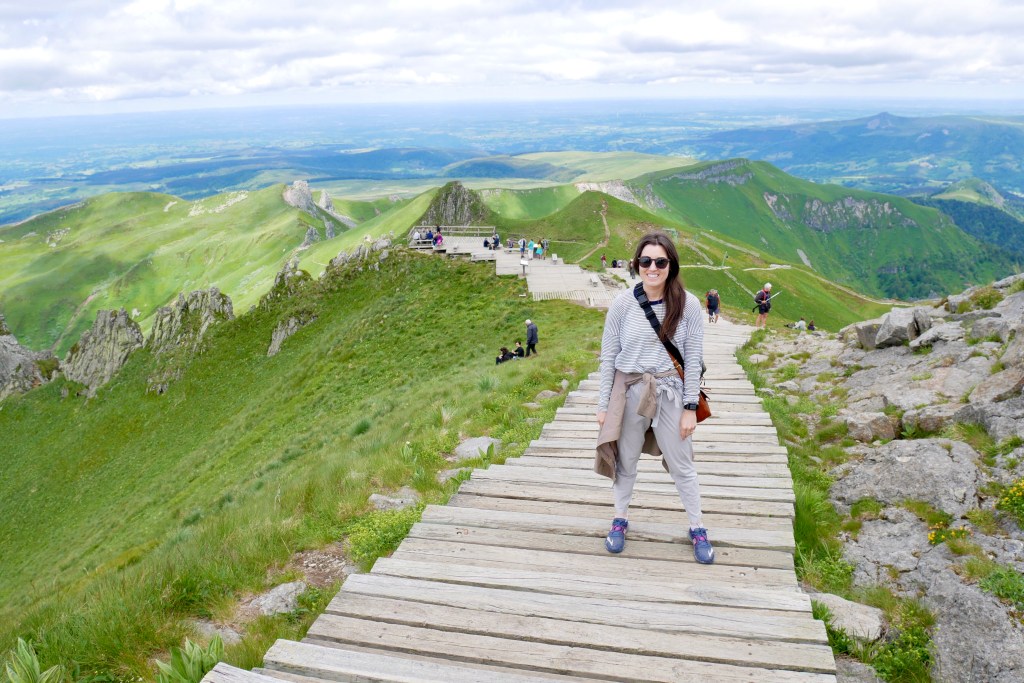
Puy de Sancy views

- A region made famous by its historic sites, picturesque canals, reputable wine-making, and famous cuisine, Burgundy lies in eastern France and is worth a visit on a cross-country road trip. Dijon, the capital of the Bourgogne-Franche-Comté region and namesake of the well-known mustard, is worth a stop, as is Beaune, the smaller wine capital of Burgundy with its historic monument Hôtel-Dieu (Hospices de Beaune).
Arriving from the south or west, choose the slower, scenic route along the Dheune waterway by taking D974. For a delicious meal and peaceful evening, stay the night just south of Beaune in Corcelles-les-Arts and experience Kevin’s hospitality at his restaurant, L’aubergiste, and bakery turned Airbnb apartment.
With some time in Dijon you can sample the mustard while admiring the timber frame houses and colorful, geometric-patterned tile roofs and then get to know the city better by following the Owl Trail. Starting at the original owl carved on the side of Église Notre-Dame, it’s easy to follow the bronze owl plaques with arrows in between the 22 different historical markers around city center. For the full historical reference, purchase an English language brochure or hire an audio guide from the tourist office. The Owl’s Trail walk can be done in an hour but if you care to travel more leisurely, allow more time. Other notable sites in Dijon are the Palais des Ducs de Bourgogne and Musée des Beaux Arts. For a view from above, purchase tickets for a set time slot on a guide-led tour up the 300 stairs to the top of the Tour Philippe le Bon.
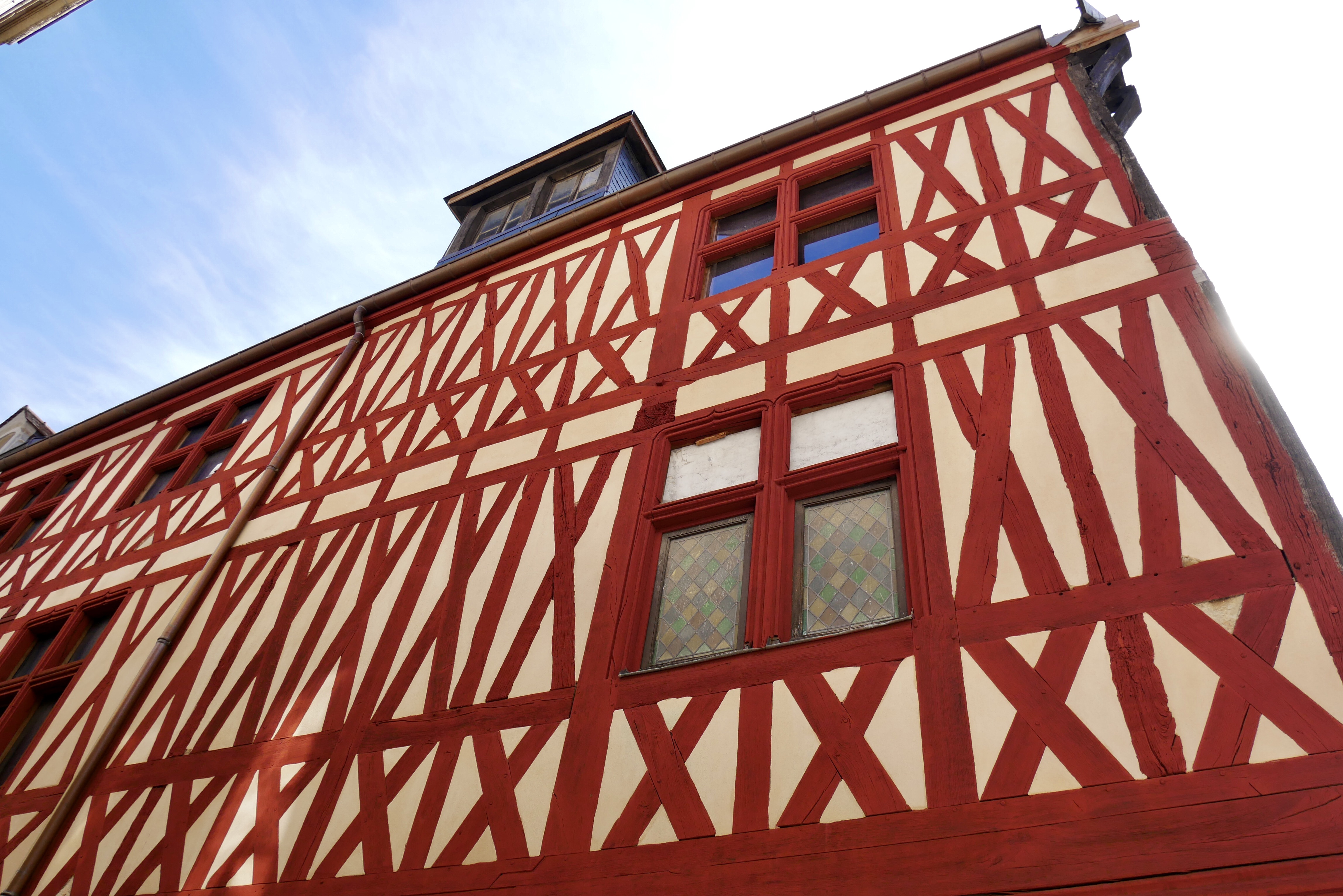
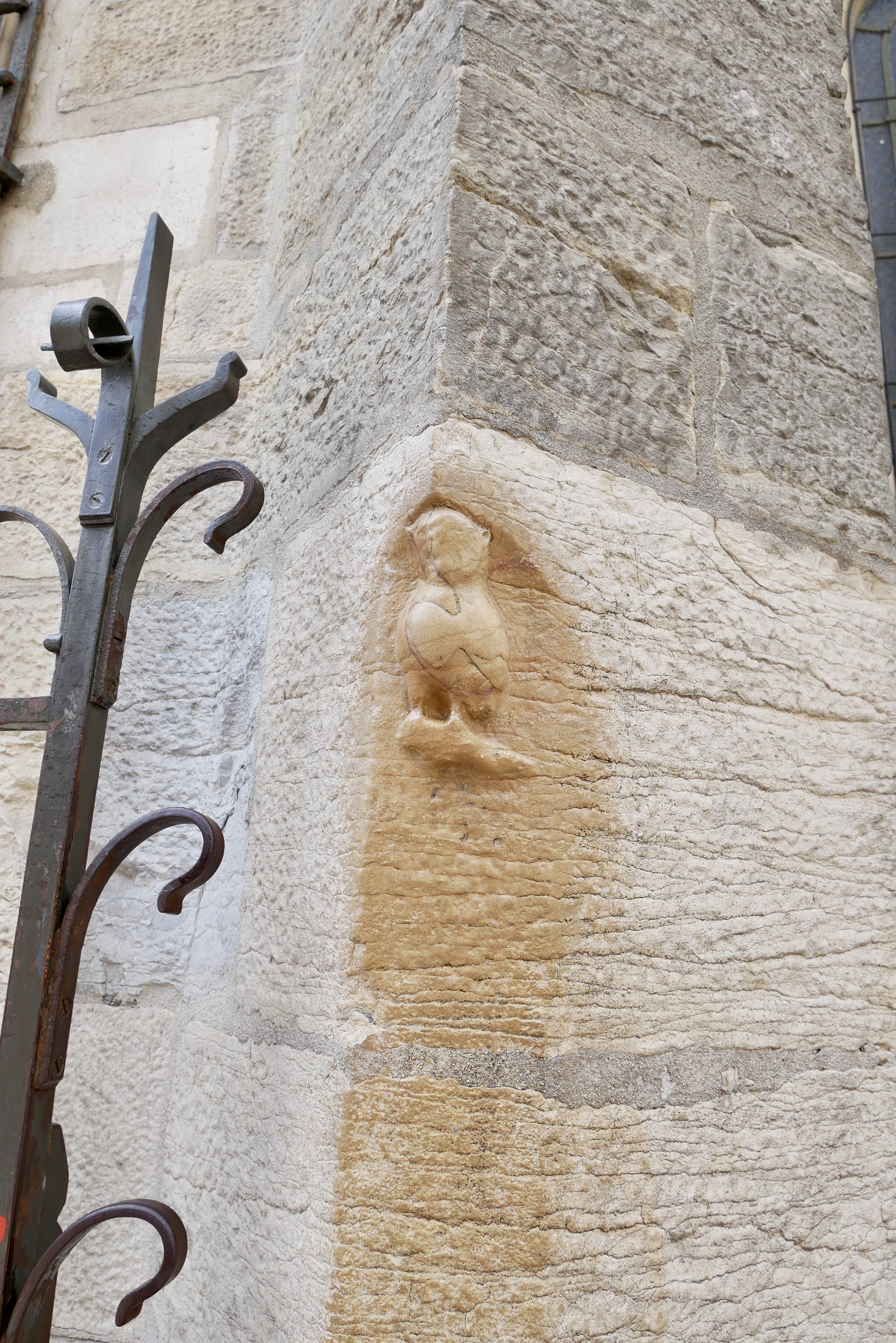



- Maybe you’ve nearly reached your capacity for consuming wine, but don’t end your road trip without a visit to the Champagne region to sample something sparkling. My recommendation is Hautvillers, a rural quiet village nestled amongst the vine covered hills, offering plenty of opportunity for affordable sampling at the local champagne houses. It is also the burial site of the monk whose name is so closely associated with champagne – Dom Pérignon. Pérignon pioneered a number of winemaking techniques at the Hautvillers abbey around 1670, which included the mastery of bottling wines in order to capture the bubble that makes champagne a sparkling wine. His name is now lent to one brand of vintage Champagne produced by the Champagne House Moët & Chandon.
Do lunch with a blind sampler of champagne at AU 36 and then proceed to the local champagne houses. At the smaller, local champagne houses like Champagne G. Tribaut and Champagne Pierre Gobillard there is no need to make a reservation, you simply pop in and request to do a sampling. A tasting of at least three champagnes will cost around 10 euros with the cost waived if you end up purchasing a couple bottles.
It’s worth noting that the two largest towns in the vicinity, Épernay and Reims, will have more accommodations and guided tours but you’ll miss out on the opportunity to stay at a peaceful Airbnb on the edge of a vineyard.
For those familiar with Jay-Z’s “Ace of Spades”, the Armand de Brignac Champagne can be found at the headquarters and vineyards of Cattier in the small town of Chigny-Les-Roses. I’m not sure about tours, but you can take a photo next to the vineyards… maybe as close as you’ll ever get to Jay Z himself.

The Moët & Chandon vineyards 
Walking the streets of Hautvillers 
Tasting at Champagne G. Tribaut
Hopefully this guide has sufficiently inspired you to plan your next road trip through France. The places I’ve covered herein are some of the many you’ll want to explore along the way. Just make sure to save some room in your luggage for those wine and mustard souvenirs you’ll want to bring back with you.



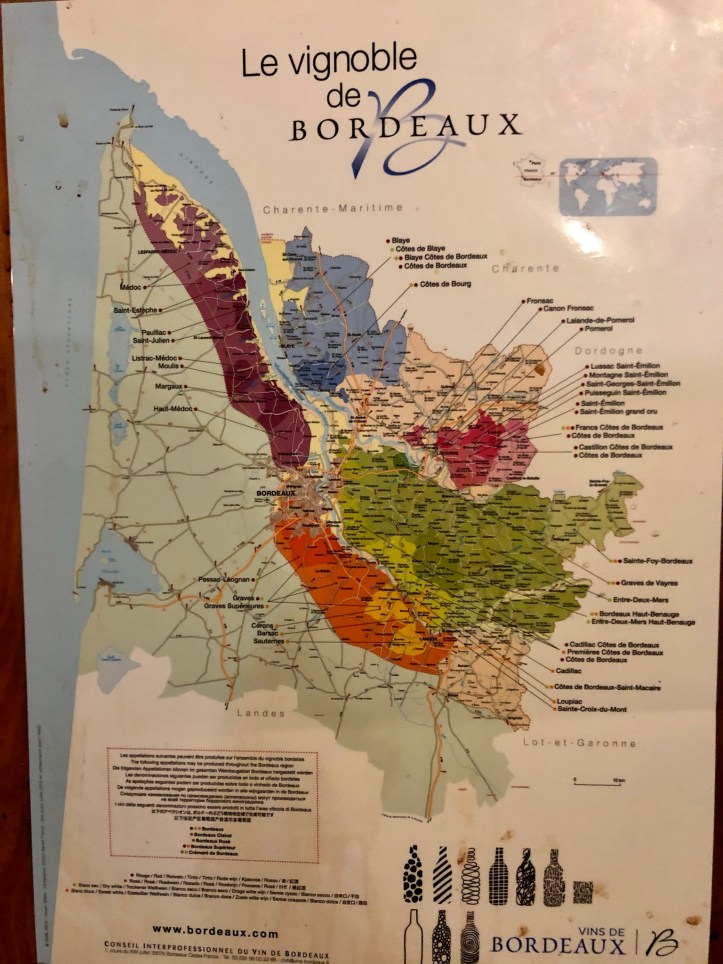



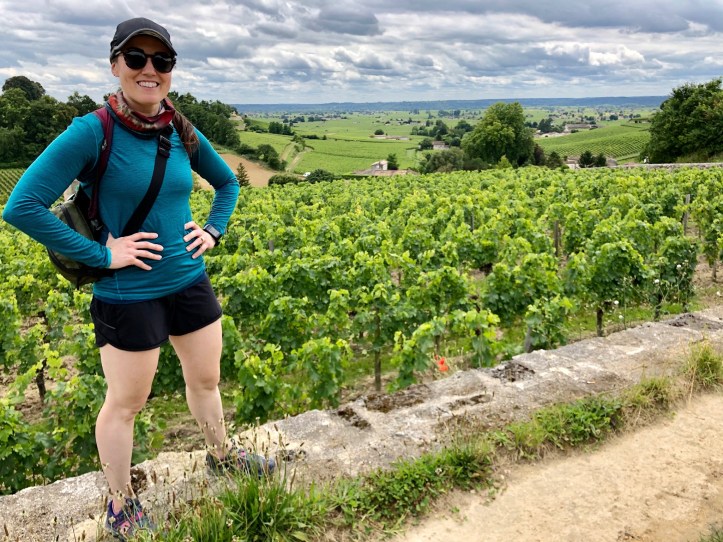
Liked your France recap. Did you see my comment On Dan being a good biker?
Sent from my iPhone
>
LikeLike
Thanks! Didn’t see your comment but he is a good biker… especially when the bike fits him.
LikeLike